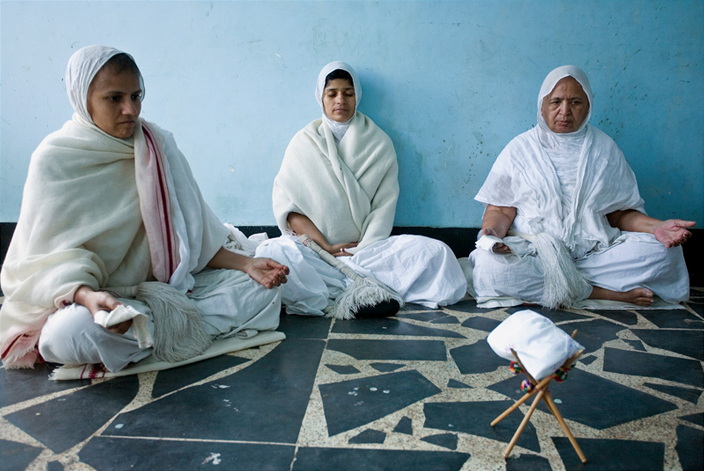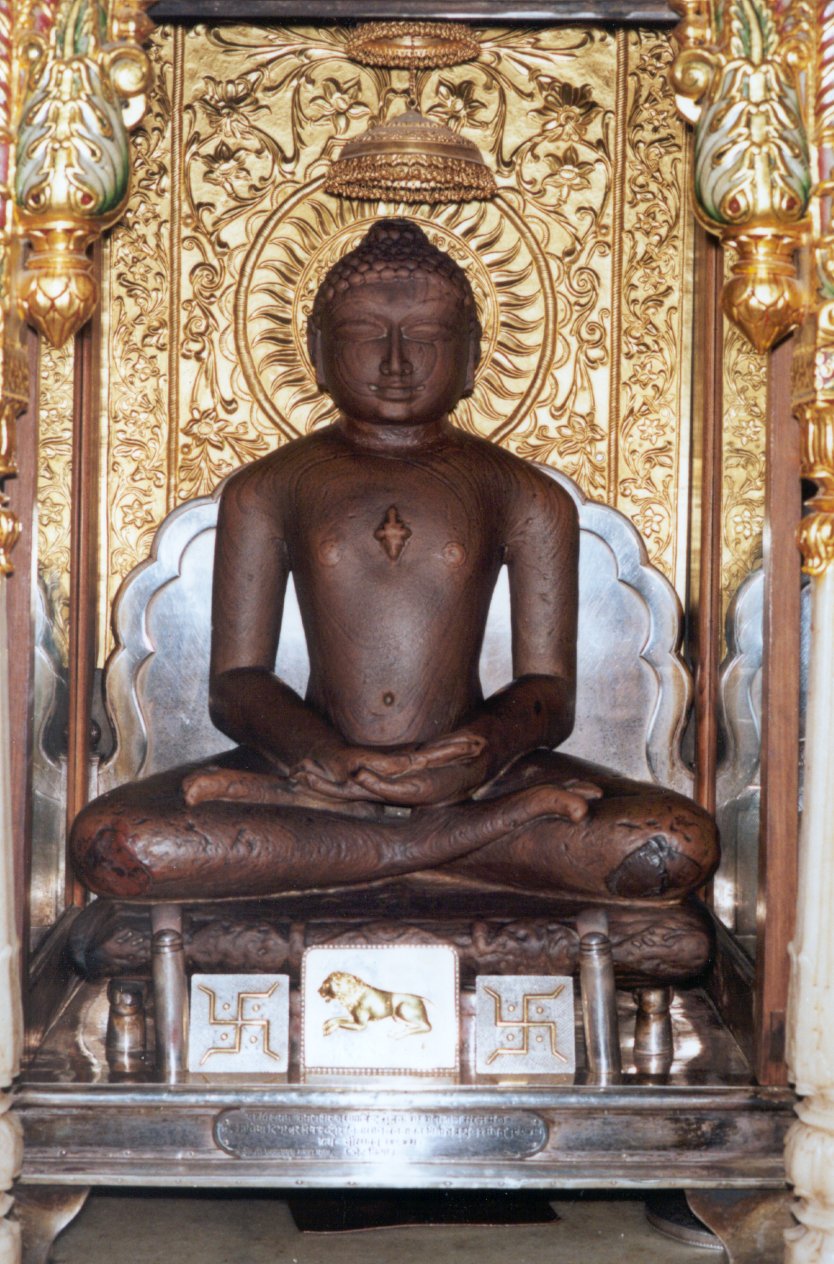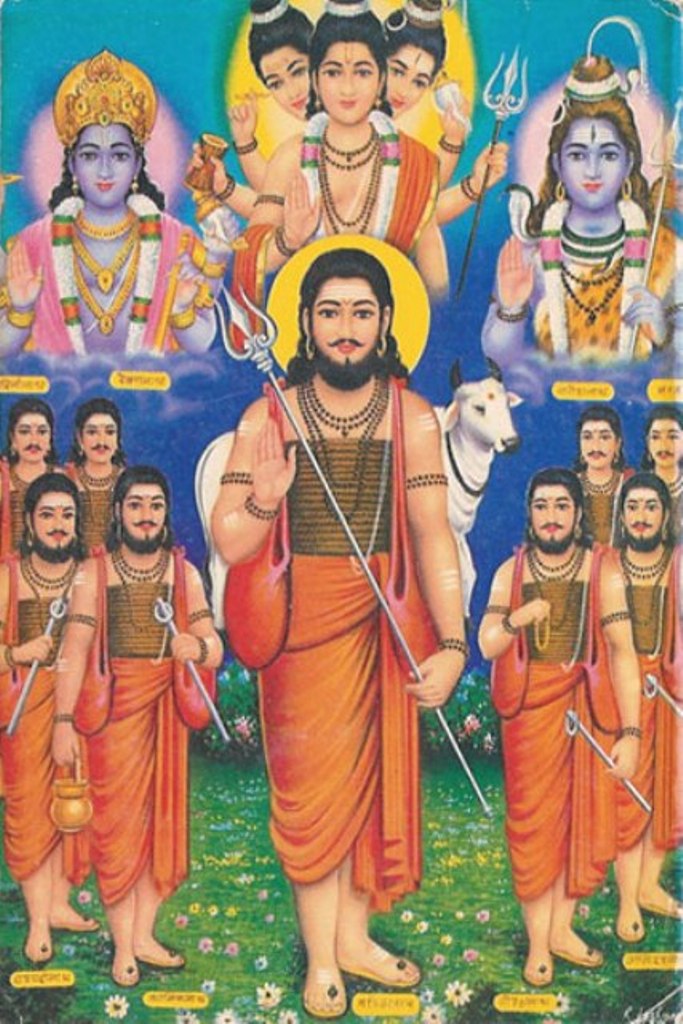|
Sadhu
''Sadhu'' (, IAST: ' (male), ''sādhvī'' or ''sādhvīne'' (female), also spelled ''saddhu'') is a religious ascetic, mendicant or any holy person in Hinduism and Jainism who has renounced the worldly life. They are sometimes alternatively referred to as'' yogi'', ''sannyasa, sannyasi'' or ''vairagi''. Sādhu means one who practises a 'sadhana' or keenly follows a path of spiritual discipline.″Autobiography of an Yogi″, Yogananda, Paramhamsa, Jaico Publishing House, 127, Mahatma Gandhi Road, Bombay Fort Road, Bombay (Mumbai) – 400 0023 (ed.1997) p.16 Although the vast majority of sādhus are yogi, yogīs, not all yogīs are sādhus. A sādhu's life is solely dedicated to achieving moksha, mokṣa (liberation from the cycle of death and rebirth), the fourth and final Ashrama (stage), aśrama (stage of life), through meditation and contemplation of Brahman. Sādhus often wear simple clothing, such as saffron-coloured clothing in Hinduism and white or nothing in Jainism, ... [...More Info...] [...Related Items...] OR: [Wikipedia] [Google] [Baidu] |
Dreadlocks
Dreadlocks, also known as dreads or locs, are a Hairstyle, hairstyle made of rope-like strands of matted hair. Dreadlocks can form naturally in Hair#Texture, very curly hair, or they can be created with techniques like twisting, Backcombing, backcombing, or crochet. Etymology The word ''dreadlocks'' is usually understood to come from Jamaican Creole ''dread'', "member of the Rastafari, Rastafarian movement who wears his hair in dreadlocks" (compare Nazirite), referring to their fear of God, dread or awe of God. An older name for dreadlocks was ''Wiktionary:elflock, elflocks'', from the notion that elf, elves had matted the locks in people's sleep. Other origins have been proposed. Some authors trace the term to the Mau Mau rebellion, Mau Mau, a group of whom apparently coined it from British Empire, British colonialists in 1959 as a reference to their dreadful hair. In their 2014 book ''Hair Story: Untangling the Roots of Black Hair in America'', Ayana Byrd and Lori Tharps cl ... [...More Info...] [...Related Items...] OR: [Wikipedia] [Google] [Baidu] |
Jainism
Jainism ( ), also known as Jain Dharma, is an Indian religions, Indian religion whose three main pillars are nonviolence (), asceticism (), and a rejection of all simplistic and one-sided views of truth and reality (). Jainism traces its spiritual ideas and history through the succession of twenty-four , supreme preachers of ''dharma''. The first in the current time cycle is Rishabhadeva, who tradition holds lived millions of years ago; the 23rd is Parshvanatha, traditionally dated to the 9th century Common Era, BCE; and the 24th is Mahāvīra, Mahavira, who lived . Jainism is considered an eternal ''dharma'' with the guiding every time cycle of the Jain cosmology, cosmology. Central to understanding Jain philosophy is the concept of ''bhedavijñāna'', or the clear distinction in the nature of the soul and non-soul entities. This principle underscores the innate purity and potential for liberation within every Jīva (Jainism), soul, distinct from the physical and menta ... [...More Info...] [...Related Items...] OR: [Wikipedia] [Google] [Baidu] |
Aryika
''Aryika'', also known as ''Sadhvi'', is a female mendicant ( nun) in Jainism. History In the traditional Digambara tradition, a male human being is considered closest to the apex with the potential to achieve liberation, particularly through asceticism. Women must gain karmic merit, to be reborn as man, and only then can they achieve spiritual liberation in the Digambara sect of Jainism. This view is different from the Svetambara sect that believes that women too can achieve liberation from '' Saṃsāra'' by being mendicants and through ascetic practices. According to Svetambara Jain texts, from '' Kalpa Sūtra'' onwards, Jainism has had more ''sadhvis'' than ''sadhus'' (female than male mendicants). In Tapa Gacch of the modern era, the ratio of sadhvis to sadhus (nuns to monks) is about 3.5 to 1. This is much higher, and in contrast to the gender ratio historically observed in Buddhism and Hinduism..According to a 2009 publication by Harvey J. Sindima, Jain monastic comm ... [...More Info...] [...Related Items...] OR: [Wikipedia] [Google] [Baidu] |
Hinduism
Hinduism () is an Hypernymy and hyponymy, umbrella term for a range of Indian religions, Indian List of religions and spiritual traditions#Indian religions, religious and spiritual traditions (Sampradaya, ''sampradaya''s) that are unified by adherence to the concept of ''dharma'', a Ṛta, cosmic order maintained by its followers through rituals and righteous living, as expounded in the Vedas. The word ''Hindu'' is an exonym, and while Hinduism has been called the oldest religion in the world, it has also been described by the modern term ''Sanātana Dharma'' () emphasizing its eternal nature. ''Vaidika Dharma'' () and ''Arya dharma'' are historical endonyms for Hinduism. Hinduism entails diverse systems of thought, marked by a range of shared Glossary of Hinduism terms, concepts that discuss God in Hinduism, theology, Hindu mythology, mythology, among other topics in Hindu texts, textual sources. Hindu texts have been classified into Śruti () and Smṛti (). The major Hin ... [...More Info...] [...Related Items...] OR: [Wikipedia] [Google] [Baidu] |
Celibacy
Celibacy (from Latin ''caelibatus'') is the state of voluntarily being unmarried, sexually abstinent, or both. It is often in association with the role of a religious official or devotee. In its narrow sense, the term ''celibacy'' is applied only to those for whom the unmarried state is the result of a sacred vow, act of renunciation, or religious conviction. In a wider sense, it is commonly understood to only mean abstinence from sexual activity. Celibacy has existed in one form or another throughout history, in virtually all the major religions of the world, and views on it have varied. Classical Hindu culture encouraged asceticism and celibacy in the later stages of life, after one has met one's societal obligations. Jainism, on the other hand, preached complete celibacy even for young monks and considered celibacy to be an essential behavior to attain moksha. Buddhism is similar to Jainism in this respect. There were, however, significant cultural differences in the va ... [...More Info...] [...Related Items...] OR: [Wikipedia] [Google] [Baidu] |
Digambara
''Digambara'' (; "sky-clad") is one of the two major Jain schools and branches, schools of Jainism, the other being ''Śvetāmbara'' (white-clad). The Sanskrit word ''Digambara'' means "sky-clad", referring to their traditional monastic practice of neither possessing nor wearing any clothes. Nakedness was the ideal practice of lord Mahavira and his immediate followers. Mahavira emphasized the importance of nakedness for monks. It symbolizes complete detachment and is an ideal form of conduct. Mahavira believed that renouncing clothes made the body immune to external influences like heat and cold, increasing resilience. Without clothes, a monk would avoid the distractions of acquiring, maintaining, and washing garments, allowing him to focus on spiritual growth and self-discipline. Digambara and Śvetāmbara traditions have had historical differences ranging from their dress code, their temples and iconography, attitude towards female monastics, their legends, and the texts the ... [...More Info...] [...Related Items...] OR: [Wikipedia] [Google] [Baidu] |
Sādhanā
''Sādhanā'' (; ; ) is an ego-transcending spiritual practice in Indian religions. It includes a variety of disciplines in Hindu, Buddhist and Jain traditions that are followed in order to achieve various spiritual or ritual objectives. Sadhana is done for attaining detachment from worldly things, which can be a goal of a sadhu. Karma yoga, bhakti yoga and jnana yoga can also be described as sadhana; constant efforts to achieve maximum level of perfection in all streams of day-to-day life can be described as Sadhana. ''Sādhanā'' can also refer to a tantric liturgy or liturgical manual, that is, the instructions to carry out a certain practice. Definitions The historian N. Bhattacharyya provides a working definition of the benefits of sādhanā as follows: B. K. S. Iyengar (1993: p. 22), in his English translation of and commentary to the ''Yoga Sutras of Patanjali'', defines sādhanā in relation to abhyāsa and kriyā: Paths The term sādhanā means "m ... [...More Info...] [...Related Items...] OR: [Wikipedia] [Google] [Baidu] |
Nath
Natha, also called Nath (), are a Shaivism, Shaiva sub-tradition within Hinduism in India and Nepal. A medieval movement, it combined ideas from Buddhism, Shaivism, Tantra and Yoga traditions of the Indian subcontinent.Natha: Indian religious sect Encyclopedia Britannica (2007) The Naths have been a confederation of devotees who consider Shiva as their first lord or guru, with varying lists of additional gurus. Of these, the 9th or 10th century Matsyendranatha and the ideas and organization mainly developed by Gorakhnath are particularly important. Gorakhnath is considered the originator of the Nath Panth. The Nath tradition has an extensive Shaivism-related theological literature of its own, most of which is ... [...More Info...] [...Related Items...] OR: [Wikipedia] [Google] [Baidu] |
Ascetic
Asceticism is a lifestyle characterized by abstinence from worldly pleasures through self-discipline, self-imposed poverty, and simple living, often for the purpose of pursuing spiritual goals. Ascetics may withdraw from the world for their practices or continue to be part of their society, but typically adopt a frugal lifestyle, characterised by the renunciation of material possessions and physical pleasures, and also spend time fasting while concentrating on the practice of religion, prayer, or meditation. Some individuals have also attempted an ascetic lifestyle to free themselves from addictions to things such as alcohol, tobacco, drugs, entertainment, sex, food, etc. Asceticism has been historically observed in many religious and philosophical traditions, most notably among Ancient Greek philosophical schools (Epicureanism, Gymnosophism, Stoicism, and Pythagoreanism), Indian religions (Buddhism, Hinduism, Jainism), Abrahamic religions (Christianity, Judaism, Islam), an ... [...More Info...] [...Related Items...] OR: [Wikipedia] [Google] [Baidu] |
Yogi
A yogi is a practitioner of Yoga, including a sannyasin or practitioner of meditation in Indian religions.A. K. Banerjea (2014), ''Philosophy of Gorakhnath with Goraksha-Vacana-Sangraha'', Motilal Banarsidass, , pp. xxiii, 297–299, 331 The feminine form, sometimes used in English, is yogini. Yogi has since the 12th century CE also denoted members of the Nath siddha tradition of Hinduism, and in Hinduism, Buddhism and Jainism, a practitioner of tantra.Rita Gross (1993), ''Buddhism After Patriarchy'', SUNY Press, , pages 85–88 In Hindu mythology, the god Shiva and the goddess Parvati are depicted as an emblematic yogi–yogini pair. Etymology In Classical Sanskrit, the word ''yogi'' (Sanskrit: masc ', योगी; fem ') is derived from ''yogin'', which refers to a practitioner of yoga. ''Yogi'' is technically male, and ''yoginī'' is the term used for female practitioners. The two terms are still used with those meanings today, but the word ''yogi'' is also ... [...More Info...] [...Related Items...] OR: [Wikipedia] [Google] [Baidu] |
Moksha
''Moksha'' (; , '), also called ''vimoksha'', ''vimukti'', and ''mukti'', is a term in Jainism, Buddhism, Hinduism, and Sikhism for various forms of emancipation, liberation, '' nirvana'', or release. In its soteriological and eschatological senses, it refers to freedom from '' saṃsāra'', the cycle of death and rebirth. In its epistemological and psychological senses, ''moksha'' is freedom from ignorance: self-realization, self-actualization and self-knowledge. In Hindu traditions, ''moksha'' is a central concept and the utmost aim of human life; the other three aims are ''dharma'' (virtuous, proper, moral life), '' artha'' (material prosperity, income security, means of life), and '' kama'' (pleasure, sensuality, emotional fulfillment). Together, these four concepts are called Puruṣārtha in Hinduism. In some schools of Indian religions, ''moksha'' is considered equivalent to and used interchangeably with other terms such as ''vimoksha'', ''vimukti'', '' kaivalya'' ... [...More Info...] [...Related Items...] OR: [Wikipedia] [Google] [Baidu] |









